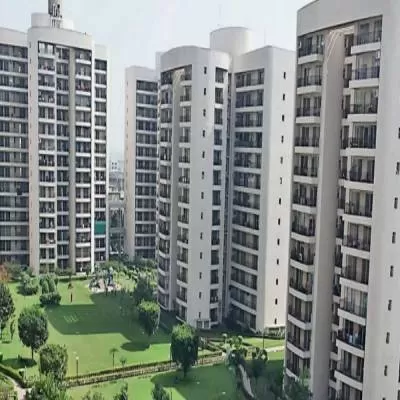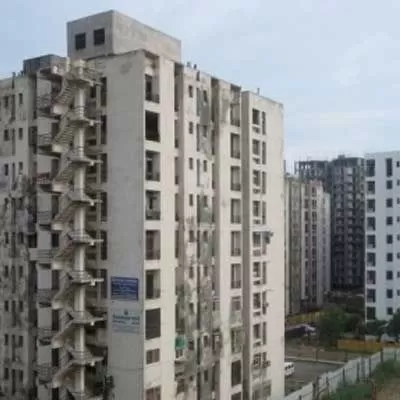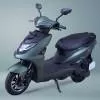- Home
- Real Estate
- Tunnel to Tomorrow

Tunnel to Tomorrow
The Asia-Pacific accounts for about 45 per cent of the global demand for tunnelling and drilling equipment, according to a report titled Global Tunnelling and Drilling Equipment Market. India´s market share is a healthy 8.4 per cent, thanks to a slew of hydroelectric, sewage, irrigation and road and railway projects on the anvil.
Tunnel boring machines (TBMs) are the biggest thing on the tunnelling horizon in India.´If all goes to plan, India will have 1,000 km of metro rail within the next decade,´ predicts Manoj Garg, Managing Director, Herrenknecht India.´Growing awareness of the benefits of underground lines makes us confident that a substantial part will indeed be underground. This will spur demand for TBMs. Other sectors such as hydropower have the potential but are developing at a much slower speed.´ ´India has many upcoming tunnelling opportunities including metro and infrastructure projects,´ says Michele Sposetti, Area Manager, Middle East & India, Seli Overseas.´Projects like the Pakal Dul hydropower project in J&K have grabbed our interest.´
Upcoming demand
As underground projects grow in number and complexity, demand is increasing for higher-capacity machines for sections like hydro tunnels, road tunnels and metro tunnels.´Higher capacity in the tunnelling context means higher advance rates and maximum availability,´ says Garg.´High performance pays off but also has its price.´
Users are associating definite advantages with higher-capacity machines.´Higher-capacity machines perform better and use fewer consumables, thus ushering in time and cost savings,´ opines Kapil Bhati, Managing Director, Robbins Tunnelling & Trenchless Technology (I) Pvt Ltd.´We expect contractors to demand such high performing TBMs for the Mumbai metro project (33 + 2 km), which is in the tendering process. It is expected to require 17 to 20 TBMs.´
Adding value
What´s helping drive the use of high-end tunnelling equipment is value-added services such as handholding and knowhow to maximise machine productivity, manpower to run the equipment, finance to facilitate the purchase and buyback arrangements to recover capital. Most vendors see these services as essentials for customer acquisition.
´We say, you won´t be alone when you buy a Robbins TBM,´ says Bhati.´We stand by contractors from the project design stage to tunnel completion, to ensure our product succeeds in finishing the project on schedule.´ Robbins makes available an engineering team to study the project area geology and suggest a best solution, and TBM engineers, TBM operators, mechanics and hydraulic technicians at machine start up or throughout the entire project depending on the customer´s need. It also offers buyback arrangements, fixed spare parts contract and fixed cutter contracts. ´Sandvik offers both financing and buyback arrangements to its customers in India based on the merits of the deal,´ says Harinder Jit Singh, Vice President, Sandvik Construction, India.
´Provision of manpower up to certain milestones or even for the duration of an entire project, buyback arrangements and assistance in equipment financing are all part of our daily business as a full service and equipment provider,´ adds Garg.
Buyers appreciate these services. ´We had sourced a double-shield TBM along with operators from SELI SPA for our Kishanganga hydroelectric power project,´ says Arun Karambelkar, President and CEO, HCC. ´As this proved successful, we are continuing with the same arrangement for our Vishnugad Pipalkoti hydroelectric project.´
Customizedfor success Customization is a buzzword in the underground construction machinery market. Project-specific TBM design is essential to mitigate risk.´Selecting the right model is also essential to maximize machine productivity, a top priority of companies engaged in tunnelling,´ says Singh.
´Customization helps ensure worker safety in the danger zone, minimize the workforce inside the tunnel and minimize the possibility of human errors,´ adds Veer Narayan, General Manager, Ircon International Ltd.
´All the TBMs we manufacture and supply are customized to suit a particular project of the client,´ says Bhati.´Customization helps the machine navigate the site geology or ground conditions. It can allow the machine to advance even in severe ground conditions.´
Unity-IVRCL deployed a Robbins-designed open gripper hard rock machine of 6.25 m (20.5 ft) diameter for a water tunnel project from Kapurbawadi to Thane. The machine, a main-beam TBM, dug 109 m below ground for 8.3 km. It achieved impressive advance rates, such as a record 870 m (2,855 ft) in a month and 58 m (188 ft) per day through hard basalt rock and fractured ground. Robbins´s field service personnel monitored the equipment and assisted its daily upkeep and inspection. According to Pravin Titare, General Manager, Unity Infraprojects Ltd,´Ground support played a critical role. The TBM was very safe in the adverse geological conditions. The rock support system and ring beam erector were helpful to reduce downtime and allowed us more production time.´
Garg cites the example of a deep intake tunnel (No. 3) at Lake Mead in the US. It required a machine capable of withstanding 15-bar hydrostatic pressure, which Herrenknecht designed and delivered. Tunnel excavation of the Klang Valley Mass Rapid Transit Sungai Buloh-Kajang Line of Kuala Lumpur needed a new type of TBM to minimise the risk of sinkholes in karstic geology.´Herrenknecht designed and delivered six machines of a brand new type,´ he says.
´Herrenknecht customisation encompasses TBMs, turnkey segment manufacturing plants, tunnel conveyor systems, rolling stock, monitoring solutions and related services all from within the Herrenknecht group,´ adds Garg. The company´s strong domestic presence, its own ISO-certified subsidiary in Chennai with facilities for TBM assembly and rebuild, growing pool of Indian and expatriate TBM specialists, warehouse facilities and production line for TBM cutting tools strengthen its customisation abilities and help ensure 24/7 support to customers.
Provisioning end-to-end solutions
Sandvik Construction sets itself apart as a player offering different kinds of solutions.´Having mining expertise comes in handy when serving companies engaged in tunnelling and underground construction,´ says Singh.´We often suggest solutions from our mining division. It also helps to have a wide range of products spanning tunnelling jumbos, road headers, mechanised rock bolters, etc. We can suggest alternative tunnelling options - say if for some reason a customer cannot drill and blast, we can offer road headers, twin cutters and breakers. We offer the alternative NATM tunnelling method to customers that are tunnelling in the Himalayas; they are young mountains with fragile, fractured and varying rock strata, requiring that rock must be stabilised after every blast before proceeding further.´
Seli Overseas counts its global experience in tunnelling (over 880 km) and TBM design (100 + TBM projects) as its unique value proposition.´TBM vendors typically design and deliver TBMs,´ says Sposetti.´Most are operating equipment in India but that isn´t the global norm. Unlike them, we are tunnelling engineers who also design and deliver TBMs. Our team includes more than 650 TBM specialists. That makes all the difference.´ Seli Overseas is currently constructing a 12.3-km headrace tunnel for Rs 395 crore as part of HCC´s Rs 1,597 crore Vishnugad Pipalkoti hydropower project in Uttarakhand. One snag is that all the major tunnel equipment is still manufactured overseas. Users would like vendors to work on reducing import lead times. Narayan explains why:´Some foreign manufacturers are opening India offices but it still takes four to six months to import specialized tunnel equipment like the boomer, shotcrete machine, road header, TBMs, etc. Clients are fixing tight project schedules including only one to two months of mobilisation time. But this is not feasible.´
Paying attention to this aspect will brighten the light at the end of the tunnel.
Suite of tunnelling equipment
Veer Narayan, General Manager, Ircon International Ltd, shares what tunnelling equipment has worked well for his company:
- Robotic total stations with automatic target recognition with linear accuracy +1mm and angular accuracy 1 second for tunnel profile marking and tunnel alignment control.
- Double-armed, fully computerised robotic boomer with GPS for drilling the tunnel face.
- Excavator bucket not less than 1-1.5 cu m.
- Robotic double boom shotcrete machine of 30 cu m per hour capacity for wet shotcreting.
- Loader of minimum capacity of 3 cu m with side tilting.
- Dumpers of at least 10 cu m.
- Gantry 8/10/12 m long depending upon the curvature.
- Grouting pump of 12 cu m per hour capacity.
- Road header for rock compressive strength
- of 40 to 80 mpa.
Tunnelling method costs vs. benefits
´HCC has used TBMs to accomplish 24 per cent of its 290 km of tunnelling experience, which speaks a lot about the efficacy of the method over the conventional drill-and-blast method,´ says Arun Karambelkar, President and CEO, HCC.´We have accomplished 69 per cent of the tunnelling with the drill-and-blast method, 3 per cent with the cut-and-cover method and 4 per cent with the NATM method. TBMs help save more than 50 per cent of the time it takes to tunnel by the drill-and-blast method though the method is more expensive. It makes sense to use TBMs if the length of the tunnel is 10 km and longer.´
´Depending upon the length of the tunnel, construction by TBMs costs two to three times more than by conventional methods (NATM, drill-and-blast method, etc) as the huge cost of TBM and preparatory works adds to the cost,´ adds Narayan. To calculate tunnelling costs, he says, additionally factor in the project´s topography and geology; population density, habitation, climatic condition and socio-economic situation at site; available space for tunnel equipment yard; tunnel design, depth, size and cross-section; depth of water table in metro projects; proximity to sea as it causes corrosion; availability of raw material and labour; proximity of the site to a port if imported equipment will be used; prevailing law-and-order conditions at site; and standard of construction deliverables.
Match ground geology to TBM design
Geological surprises can pose one of the biggest risks to tunnelling projects. Project-specific risk assessment is a vital first step for tunnelling success.´Geological mapping helps choose the optimal tunnel alignment, purchase the right equipment and minimise implementation risks,´ says Veer Narayan, General Manager, Ircon International Ltd.
What does it involve?´It includes a site geophysical survey, exploratory drilling (deep and shallow) with rocks and soil testing at different depths, geo-hydrological investigation and in-situ rock mechanics testing,´ explains Narayan.
´Also, developing the longitudinal cross-section of the tunnel alignment can help identify the anticipated rock class and determine what tunnel support will be appropriate. Face mapping by making probe holes can help forecast the actual rock mass class against anticipated geology and design appropriate supports.´ Assistance can be had from the Geological Survey of India, National Geophysical Research Institute, National Institute of Rock Mechanics, and IITs. Also, organisations like ONGC, NTPC, NHPC, RITES, IRCON and DMRC have geotechnical and geological divisions.
HCC has been and continues to be heavily involved with the construction of the Delhi Metro. Most recently, it has started work on the CC34 package, part of the third phase of development of the Delhi Metro, running from the existing Janakpuri West elevated station to Palam.
Arun Karambelkar, President and CEO, HCC, describes how the geology of the area was ascertained:´A total of 43 boreholes were undertaken along the alignment of CC-34 tunnel. They revealed silty sand of low plasticity of varying standard penetration test value with presence of water at a depth of 10 m. In such geological conditions, earth-pressure-balance TBM is most suitable. Selecting the right TBM technology allowed HCC to achieve an average monthly progress of 298 m. HCC has deployed five TBMs for the Delhi Metro.´ The company has also successfully completed the tunnelling work at the Kishanganga hydroelectric power project.´There, we anticipated complex geology typical of the Himalayas. To confirm it, we conducted a detailed study with IIT Roorkee. Based on the results, we used a double-shield TBM from Seli Italy, specially modified with additional pushing and boring power,´ adds Karambelkar.
- Asia-Pacific Accounts
- Tunnelling
- Drilling Equipment
- Hydroelectric
- Sewage
- Irrigation
- Road
- Railway
- TBM
- Manoj Garg
- Herrenknecht India
- Pakal Dul
- Kapil Bhati
- hydropower project
- Robbins Tunnelling & Trenchless Technology (I) Pvt Ltd.
- Sandvik
- Harinder Jit Singh,SELI SPA
- Vishnugad Pipalkoti hydroelectric project
- Arun Karambelkar
- Veer Narayan
- Unity-IVRCL
- Gripper Hard Rock Machine,
Infrastructure projects mandating underground construction are making India a tunnelling market to reckon with, discovers CHARU BAHRI. The Asia-Pacific accounts for about 45 per cent of the global demand for tunnelling and drilling equipment, according to a report titled Global Tunnelling and Drilling Equipment Market. India´s market share is a healthy 8.4 per cent, thanks to a slew of hydroelectric, sewage, irrigation and road and railway projects on the anvil. Tunnel boring machines (TBMs) are the biggest thing on the tunnelling horizon in India.´If all goes to plan, India will have 1,000 km of metro rail within the next decade,´ predicts Manoj Garg, Managing Director, Herrenknecht India.´Growing awareness of the benefits of underground lines makes us confident that a substantial part will indeed be underground. This will spur demand for TBMs. Other sectors such as hydropower have the potential but are developing at a much slower speed.´ ´India has many upcoming tunnelling opportunities including metro and infrastructure projects,´ says Michele Sposetti, Area Manager, Middle East & India, Seli Overseas.´Projects like the Pakal Dul hydropower project in J&K have grabbed our interest.´ Upcoming demand As underground projects grow in number and complexity, demand is increasing for higher-capacity machines for sections like hydro tunnels, road tunnels and metro tunnels.´Higher capacity in the tunnelling context means higher advance rates and maximum availability,´ says Garg.´High performance pays off but also has its price.´ Users are associating definite advantages with higher-capacity machines.´Higher-capacity machines perform better and use fewer consumables, thus ushering in time and cost savings,´ opines Kapil Bhati, Managing Director, Robbins Tunnelling & Trenchless Technology (I) Pvt Ltd.´We expect contractors to demand such high performing TBMs for the Mumbai metro project (33 + 2 km), which is in the tendering process. It is expected to require 17 to 20 TBMs.´ Adding value What´s helping drive the use of high-end tunnelling equipment is value-added services such as handholding and knowhow to maximise machine productivity, manpower to run the equipment, finance to facilitate the purchase and buyback arrangements to recover capital. Most vendors see these services as essentials for customer acquisition. ´We say, you won´t be alone when you buy a Robbins TBM,´ says Bhati.´We stand by contractors from the project design stage to tunnel completion, to ensure our product succeeds in finishing the project on schedule.´ Robbins makes available an engineering team to study the project area geology and suggest a best solution, and TBM engineers, TBM operators, mechanics and hydraulic technicians at machine start up or throughout the entire project depending on the customer´s need. It also offers buyback arrangements, fixed spare parts contract and fixed cutter contracts. ´Sandvik offers both financing and buyback arrangements to its customers in India based on the merits of the deal,´ says Harinder Jit Singh, Vice President, Sandvik Construction, India. ´Provision of manpower up to certain milestones or even for the duration of an entire project, buyback arrangements and assistance in equipment financing are all part of our daily business as a full service and equipment provider,´ adds Garg. Buyers appreciate these services. ´We had sourced a double-shield TBM along with operators from SELI SPA for our Kishanganga hydroelectric power project,´ says Arun Karambelkar, President and CEO, HCC. ´As this proved successful, we are continuing with the same arrangement for our Vishnugad Pipalkoti hydroelectric project.´ Customizedfor success Customization is a buzzword in the underground construction machinery market. Project-specific TBM design is essential to mitigate risk.´Selecting the right model is also essential to maximize machine productivity, a top priority of companies engaged in tunnelling,´ says Singh. ´Customization helps ensure worker safety in the danger zone, minimize the workforce inside the tunnel and minimize the possibility of human errors,´ adds Veer Narayan, General Manager, Ircon International Ltd. ´All the TBMs we manufacture and supply are customized to suit a particular project of the client,´ says Bhati.´Customization helps the machine navigate the site geology or ground conditions. It can allow the machine to advance even in severe ground conditions.´ Unity-IVRCL deployed a Robbins-designed open gripper hard rock machine of 6.25 m (20.5 ft) diameter for a water tunnel project from Kapurbawadi to Thane. The machine, a main-beam TBM, dug 109 m below ground for 8.3 km. It achieved impressive advance rates, such as a record 870 m (2,855 ft) in a month and 58 m (188 ft) per day through hard basalt rock and fractured ground. Robbins´s field service personnel monitored the equipment and assisted its daily upkeep and inspection. According to Pravin Titare, General Manager, Unity Infraprojects Ltd,´Ground support played a critical role. The TBM was very safe in the adverse geological conditions. The rock support system and ring beam erector were helpful to reduce downtime and allowed us more production time.´ Garg cites the example of a deep intake tunnel (No. 3) at Lake Mead in the US. It required a machine capable of withstanding 15-bar hydrostatic pressure, which Herrenknecht designed and delivered. Tunnel excavation of the Klang Valley Mass Rapid Transit Sungai Buloh-Kajang Line of Kuala Lumpur needed a new type of TBM to minimise the risk of sinkholes in karstic geology.´Herrenknecht designed and delivered six machines of a brand new type,´ he says. ´Herrenknecht customisation encompasses TBMs, turnkey segment manufacturing plants, tunnel conveyor systems, rolling stock, monitoring solutions and related services all from within the Herrenknecht group,´ adds Garg. The company´s strong domestic presence, its own ISO-certified subsidiary in Chennai with facilities for TBM assembly and rebuild, growing pool of Indian and expatriate TBM specialists, warehouse facilities and production line for TBM cutting tools strengthen its customisation abilities and help ensure 24/7 support to customers. Provisioning end-to-end solutions Sandvik Construction sets itself apart as a player offering different kinds of solutions.´Having mining expertise comes in handy when serving companies engaged in tunnelling and underground construction,´ says Singh.´We often suggest solutions from our mining division. It also helps to have a wide range of products spanning tunnelling jumbos, road headers, mechanised rock bolters, etc. We can suggest alternative tunnelling options - say if for some reason a customer cannot drill and blast, we can offer road headers, twin cutters and breakers. We offer the alternative NATM tunnelling method to customers that are tunnelling in the Himalayas; they are young mountains with fragile, fractured and varying rock strata, requiring that rock must be stabilised after every blast before proceeding further.´ Seli Overseas counts its global experience in tunnelling (over 880 km) and TBM design (100 + TBM projects) as its unique value proposition.´TBM vendors typically design and deliver TBMs,´ says Sposetti.´Most are operating equipment in India but that isn´t the global norm. Unlike them, we are tunnelling engineers who also design and deliver TBMs. Our team includes more than 650 TBM specialists. That makes all the difference.´ Seli Overseas is currently constructing a 12.3-km headrace tunnel for Rs 395 crore as part of HCC´s Rs 1,597 crore Vishnugad Pipalkoti hydropower project in Uttarakhand. One snag is that all the major tunnel equipment is still manufactured overseas. Users would like vendors to work on reducing import lead times. Narayan explains why:´Some foreign manufacturers are opening India offices but it still takes four to six months to import specialized tunnel equipment like the boomer, shotcrete machine, road header, TBMs, etc. Clients are fixing tight project schedules including only one to two months of mobilisation time. But this is not feasible.´ Paying attention to this aspect will brighten the light at the end of the tunnel. Suite of tunnelling equipment Veer Narayan, General Manager, Ircon International Ltd, shares what tunnelling equipment has worked well for his company: Robotic total stations with automatic target recognition with linear accuracy +1mm and angular accuracy 1 second for tunnel profile marking and tunnel alignment control. Double-armed, fully computerised robotic boomer with GPS for drilling the tunnel face. Excavator bucket not less than 1-1.5 cu m. Robotic double boom shotcrete machine of 30 cu m per hour capacity for wet shotcreting. Loader of minimum capacity of 3 cu m with side tilting. Dumpers of at least 10 cu m. Gantry 8/10/12 m long depending upon the curvature. Grouting pump of 12 cu m per hour capacity. Road header for rock compressive strength of 40 to 80 mpa. Tunnelling method costs vs. benefits ´HCC has used TBMs to accomplish 24 per cent of its 290 km of tunnelling experience, which speaks a lot about the efficacy of the method over the conventional drill-and-blast method,´ says Arun Karambelkar, President and CEO, HCC.´We have accomplished 69 per cent of the tunnelling with the drill-and-blast method, 3 per cent with the cut-and-cover method and 4 per cent with the NATM method. TBMs help save more than 50 per cent of the time it takes to tunnel by the drill-and-blast method though the method is more expensive. It makes sense to use TBMs if the length of the tunnel is 10 km and longer.´ ´Depending upon the length of the tunnel, construction by TBMs costs two to three times more than by conventional methods (NATM, drill-and-blast method, etc) as the huge cost of TBM and preparatory works adds to the cost,´ adds Narayan. To calculate tunnelling costs, he says, additionally factor in the project´s topography and geology; population density, habitation, climatic condition and socio-economic situation at site; available space for tunnel equipment yard; tunnel design, depth, size and cross-section; depth of water table in metro projects; proximity to sea as it causes corrosion; availability of raw material and labour; proximity of the site to a port if imported equipment will be used; prevailing law-and-order conditions at site; and standard of construction deliverables. Match ground geology to TBM design Geological surprises can pose one of the biggest risks to tunnelling projects. Project-specific risk assessment is a vital first step for tunnelling success.´Geological mapping helps choose the optimal tunnel alignment, purchase the right equipment and minimise implementation risks,´ says Veer Narayan, General Manager, Ircon International Ltd. What does it involve?´It includes a site geophysical survey, exploratory drilling (deep and shallow) with rocks and soil testing at different depths, geo-hydrological investigation and in-situ rock mechanics testing,´ explains Narayan. ´Also, developing the longitudinal cross-section of the tunnel alignment can help identify the anticipated rock class and determine what tunnel support will be appropriate. Face mapping by making probe holes can help forecast the actual rock mass class against anticipated geology and design appropriate supports.´ Assistance can be had from the Geological Survey of India, National Geophysical Research Institute, National Institute of Rock Mechanics, and IITs. Also, organisations like ONGC, NTPC, NHPC, RITES, IRCON and DMRC have geotechnical and geological divisions. HCC has been and continues to be heavily involved with the construction of the Delhi Metro. Most recently, it has started work on the CC34 package, part of the third phase of development of the Delhi Metro, running from the existing Janakpuri West elevated station to Palam. Arun Karambelkar, President and CEO, HCC, describes how the geology of the area was ascertained:´A total of 43 boreholes were undertaken along the alignment of CC-34 tunnel. They revealed silty sand of low plasticity of varying standard penetration test value with presence of water at a depth of 10 m. In such geological conditions, earth-pressure-balance TBM is most suitable. Selecting the right TBM technology allowed HCC to achieve an average monthly progress of 298 m. HCC has deployed five TBMs for the Delhi Metro.´ The company has also successfully completed the tunnelling work at the Kishanganga hydroelectric power project.´There, we anticipated complex geology typical of the Himalayas. To confirm it, we conducted a detailed study with IIT Roorkee. Based on the results, we used a double-shield TBM from Seli Italy, specially modified with additional pushing and boring power,´ adds Karambelkar.




















